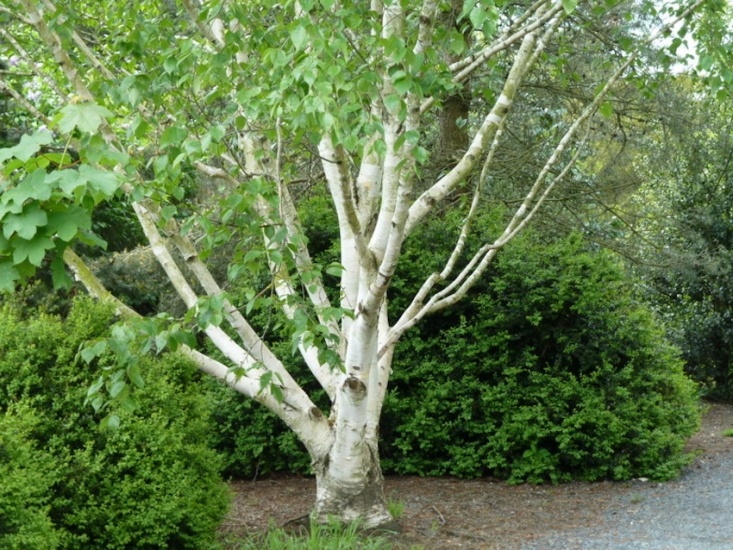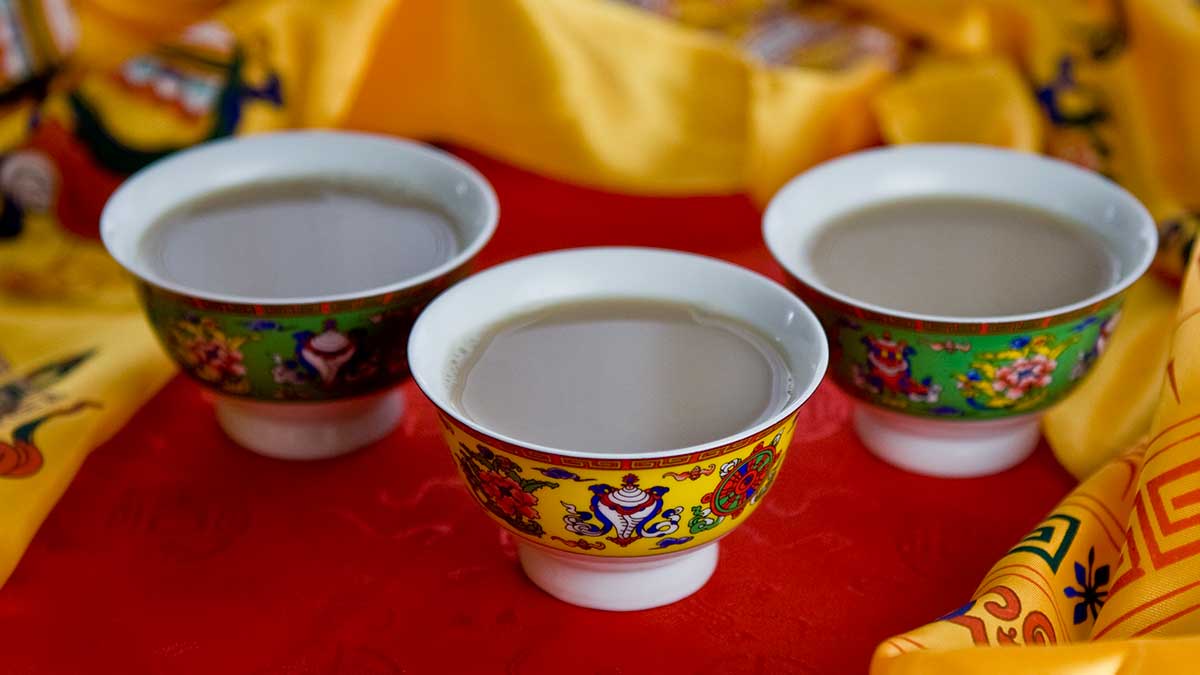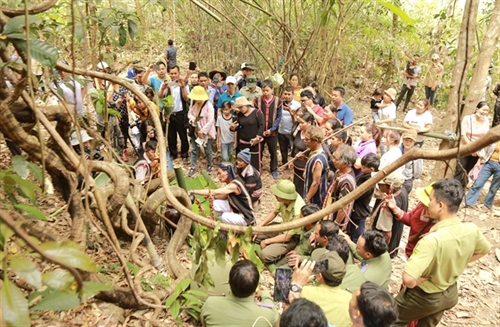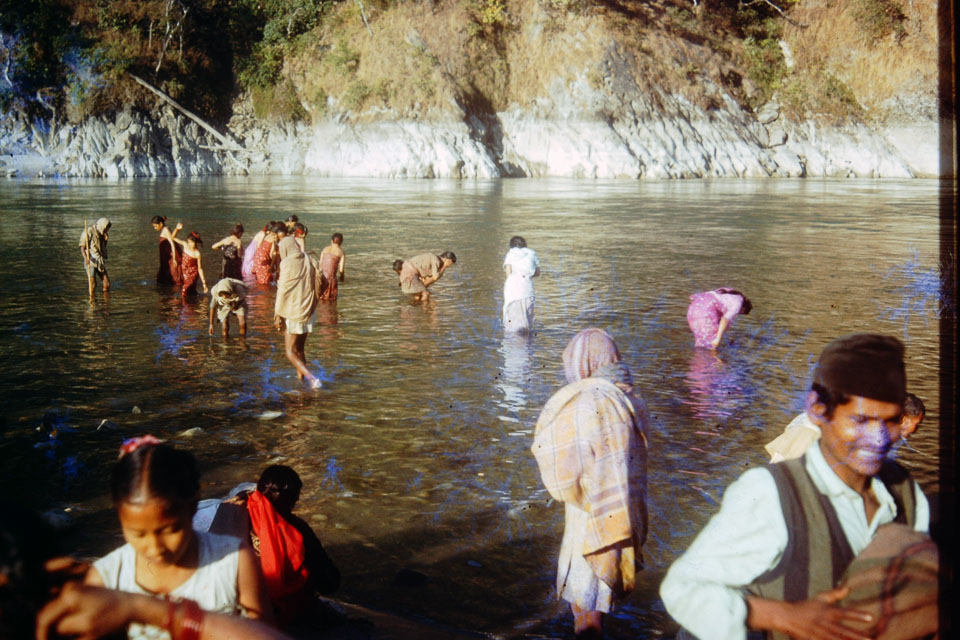Share this Article
Introduction
Bhojpatra (Betula utilis), commonly known as birch bark, has been a significant material in the ancient manuscript tradition of Nepal and the greater Himalayan region. Revered for its durability, availability, and sacred connotations, Bhojpatra was widely used in ancient Nepal to write manuscripts, religious texts, and legal documents. Long before the advent of paper, this naturally occurring material was considered ideal for recording important information and preserving spiritual wisdom. The use of Bhojpatra to preserve texts not only reflects the ingenuity of ancient Nepali society but also its reverence for knowledge, spirituality, and cultural heritage.
Historical Context
The practice of writing on Bhojpatra dates back to at least the first millennium CE, and it flourished in the medieval period. In Nepal, the Kathmandu Valley—home to a vibrant scholarly and religious tradition—became one of the central hubs for the production of these manuscripts. As early as the Licchavi period (ca. 400–750 CE), Bhojpatra was used to record royal decrees, Hindu scriptures, and Buddhist teachings. The material played a crucial role in documenting ancient laws, religious rituals, and philosophical discourses.
Birch trees grow abundantly in the higher altitudes of the Himalayas, particularly in regions like northern Nepal, Tibet, and Bhutan. The bark, which naturally peels off from the tree, was harvested without causing harm to the plant. Its fine, durable layers were then carefully prepared for writing. Known for its longevity and resistance to decay, Bhojpatra became the preferred medium for recording sacred and legal texts.
The tradition of writing on Bhojpatra is also deeply connected with religious and mythological beliefs. In Hindu mythology, Bhojpatra is associated with the sage Veda Vyasa, who is believed to have used birch bark to write down the Vedas and other holy scriptures. Similarly, in Tantric and Buddhist traditions, Bhojpatra was considered auspicious for recording sacred mantras and rituals. It is believed that writing on this sacred bark helps preserve the spiritual power of the texts for future generations.

Betula Utilis, tree from which Bhojpatra was made
Preparing Bhojpatra for Manuscripts
The process of preparing Bhojpatra for writing required both skill and patience. The bark was carefully harvested from birch trees growing in high-altitude forests. Once peeled, the bark was flattened and dried. The inner layers, which were softer and more flexible, were selected for use as writing material. These layers were then trimmed and smoothed, sometimes with natural substances or polishing tools, to create a clean, flat surface.
Scribes used ink made from natural ingredients such as carbon black, mixed with plant gums, to write on the Bhojpatra sheets. The writing was done with fine reed or bamboo pens. Despite the relative fragility of the birch bark compared to modern paper, Bhojpatra manuscripts have withstood centuries of use, thanks to the bark’s natural resilience and the meticulous care with which they were produced.
Use of Bhojpatra in Sacred Texts
Bhojpatra was predominantly used for writing sacred Hindu and Buddhist texts, which were often passed down through oral traditions before being committed to written form. Among the most important texts written on Bhojpatra were religious scriptures, including the Vedas, Puranas, and Buddhist sutras. These manuscripts were regarded as not merely containers of knowledge but also objects of veneration, carrying spiritual significance.
Many tantric texts, which detail esoteric rituals and practices in both Hinduism and Vajrayana Buddhism, were written on Bhojpatra. These manuscripts often contained intricate illustrations, diagrams, and symbols related to the practices described within the text, making them unique in both their artistic and religious importance.
Bhojpatra was also used to record legal documents, royal edicts, and genealogies, which helped preserve the cultural and political history of ancient Nepal. For example, inscriptions documenting the reigns of various rulers of the Malla dynasty, as well as land grants and trade agreements, were often recorded on Bhojpatra.
Preservation of Bhojpatra Manuscripts
Today, many Bhojpatra manuscripts are preserved in museums, monasteries, and archives across Nepal and India. Some of the most significant collections of Bhojpatra manuscripts are housed in the National Archives of Nepal in Kathmandu, which contains thousands of historical documents, including religious texts, royal decrees, and literary works.
Over time, the preservation of these ancient manuscripts has become a priority due to the fragile nature of Bhojpatra. Conservation efforts include proper storage techniques, such as maintaining stable temperature and humidity conditions to prevent further deterioration. Additionally, digital archiving projects are underway to ensure that these manuscripts are preserved for future generations.
Cultural and Spiritual Significance
Bhojpatra is not only significant because of its role in preserving history and spiritual wisdom but also because of its symbolic association with purity and divine knowledge. In Nepal, the bark is often used in rituals and ceremonies to this day. Bhojpatra is considered sacred and is used in various Hindu rituals, including the writing of yantras (mystical diagrams) and mantras. The bark is also sometimes placed in homes or temples as a talisman to ward off negative energies.
The use of Bhojpatra in Nepal is closely tied to the tradition of Guru-Shishya (teacher-student) transmission, where sacred knowledge was passed down orally and later written on birch bark for preservation. Many Gurus entrusted their teachings to Bhojpatra manuscripts, ensuring that spiritual knowledge was safeguarded across generations.
In some Hindu rituals, pieces of Bhojpatra are still used for ceremonial purposes, particularly in Homa (fire sacrifices) where sacred offerings are made. The bark’s ability to endure natural elements also adds to its symbolic value as a material that preserves and protects divine wisdom.
Current Relevance and Conservation
While the practice of writing on Bhojpatra has declined with the widespread use of paper and digital technology, it remains a subject of interest among historians, scholars, and cultural preservationists. There are ongoing efforts to document, restore, and digitize ancient Bhojpatra manuscripts to ensure their continued preservation.
In modern times, the symbolic value of Bhojpatra remains intact, especially in religious and cultural contexts. The traditional knowledge systems preserved on Bhojpatra serve as a reminder of the deep-rooted connection between spirituality, culture, and the natural world in Nepal.
Many universities and research institutions have also started examining these manuscripts to better understand Nepal’s history, religious practices, and linguistic developments. Moreover, Bhojpatra has become an area of interest for artisans and craftspeople, who create replicas and artwork inspired by the traditional manuscripts, keeping the cultural legacy alive.
Conclusion
Bhojpatra stands as a testament to Nepal’s ancient scholarly and spiritual traditions, providing a bridge between past and present. As a medium for recording sacred texts, historical events, and legal documents, Bhojpatra has played a crucial role in preserving Nepal’s cultural and religious heritage. Its significance extends beyond its practical use, symbolizing the purity of knowledge, the continuity of tradition, and the enduring connection between the natural world and divine wisdom. As preservation efforts continue, the cultural legacy of Bhojpatra will remain a vital part of Nepal’s historical and spiritual identity for generations to come.
Categories:
Culture & Traditions
,
History & Heritage
Tags:
bhojpatra







